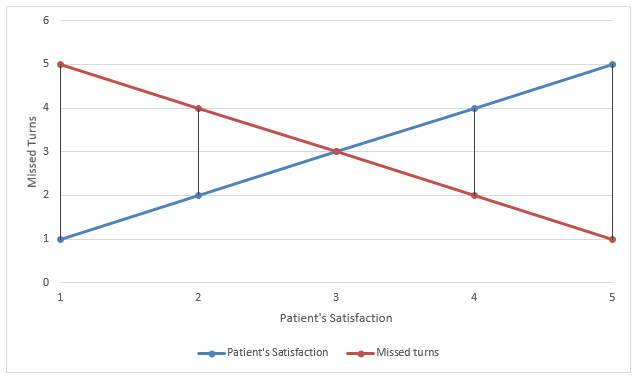Applicable Change or Nursing Theory Utilized
Addressing the current problem of understaffing in the United States will need a policy change. As explained above, the issue is aggravated by high levels of dissatisfaction among nurses in the country. Poor scheduling, workload, and poor remuneration are some of the issues that lead to nurses’ dissatisfaction in the country. When implementing change, these issues must be given priority. The management of hospitals in the country will need to have an effective scheduling system that makes it possible for nurses to have time to rest away from work.
They should not be subjected to heavy workloads because that may affect the quality of their performance. The government should also remember that it has a role to play in enhancing the pay of the nurses (Twigg, Gelder, & Myers, 2015). Making these improvements will enhance the level of satisfaction of the nurses.

It will make the career in nursing appealing to the student. If it is done in the right way, American society will experience an increase in the number of students graduating from nursing schools. The study also revealed that the satisfaction of nurses is directly proportional to the satisfaction of patients, as shown in figure 1. When nurses are satisfied, they will improve their performance. Patients will be the beneficiaries of the better performance of nurses. The study also found out that when patients are satisfied, cases of missed turns are reduced (the two variables are inversely proportional) as shown in figure 2 below. It means that enhancing job satisfaction among nurses is the change needed to address the problem.

Proposed Implementation Plan with Outcome Measures
The implementation of the proposed change can be done in two phases. The first phase will be at the organizational level. The management units of specific hospitals within the country will be responsible for this phase of implementation. Depending on the nature of the work of the nurses, and effective scheduling system will be needed that defines the time nurses start their job and the time they need to leave. Kiekkas (2013) advises that cases of overtime should only be allowed when it is very necessary.
These institutions should also embrace the use of technology to facilitate the handover process. Those starting their shift should easily understand what their colleagues did and what they need to do in their shift. The management will also need to ensure that nurses are not overburdened at work when planning the schedule. The second phase will be implemented by the government, and it will involve improvement of the remuneration for the nurses.
The pay that these nurses receive should reflect the nature of their work in various institutions of healthcare. The outcome of the improved working environment is expected to make the profession more attractive. One of the measures of the outcome will be the number of students enrolling for nursing courses in the country. It is expected that the more nurses get satisfied, the higher the quality of their work will be (Junttila, Koivu, Fagerström, Haatainen, & Nykänen, 2016). The country will be able to address the current problem of understaffing.
Identification of Potential Barriers to Plan Implementation
It is necessary to admit that the implementation of the plan may be affected by various factors. Identifying these potential barriers to the implementation of this plan is crucial. One of the main barriers to the implementation of the plan is the increasing number of undocumented people in the country. When developing its budget, these people are often not accounted for, which means that they are not factored in staffing hospitals. Disasters such as flash floods, tornadoes, terror attacks, and accidents may disrupt nurses’ schedule when emergency services are needed. Lack of goodwill among policy-makers may also be a major barrier to the implementation of the plan, especially the issue of increasing nurses’ salary (Kiekkas, 2013).
How These Could Be Overcome
It is necessary to find ways of addressing the potential barriers to ensure that the plan is implemented successfully. To address the issue of an increasing number of undocumented people seeking medical services in the country, the government should always adjust its budget because of the problem of illegal immigration. When staffing hospitals, the government should factor in the increasing number of illegal immigrants. When addressing the problem of emergencies that may disrupt the developed schedule, hospitals should work closely with the federal and state government to have an emergency response system (Kiekkas, 2013).
It means that in cases of emergencies, nurses from other parts of the state can be invited to local hospitals to help address the problem. The issue of lack of goodwill among the policy-makers can be addressed by promoting awareness campaigns in society. The American society should be reminded of the challenges that nurses undergo and the need to improve their remuneration. Public demand may help force the policy-makers to improve the salaries of nurses.
References
Junttila, J., Koivu, A., Fagerström, L., Haatainen, K., & Nykänen, P. (2016). Hospital mortality and optimality of nursing workload: A study on the predictive validity of the RAFAELA Nursing Intensity and Staffing System. International Journal of Nursing Studies, 60, 46-53.
Kiekkas, P. (2013). Nurse understaffing and infection risk: Current evidence, future research, and health policy. Nursing in Critical Care, 18(2), 61-62.
Twigg, D., Gelder, L., & Myers, H. (2015). The impact of understaffed shifts on nurse-sensitive outcomes. Journal of Advanced Nursing, 71(7), 1564-1572.